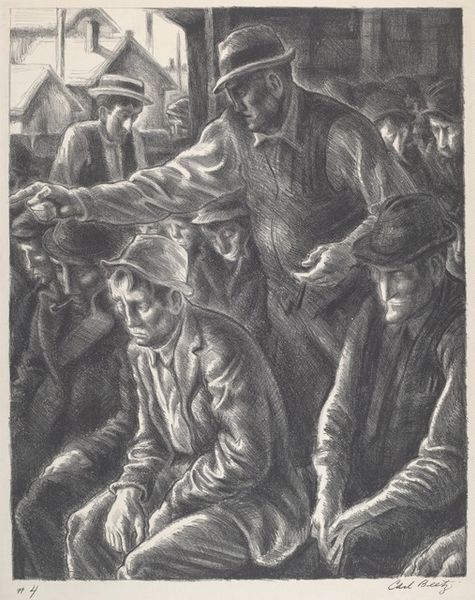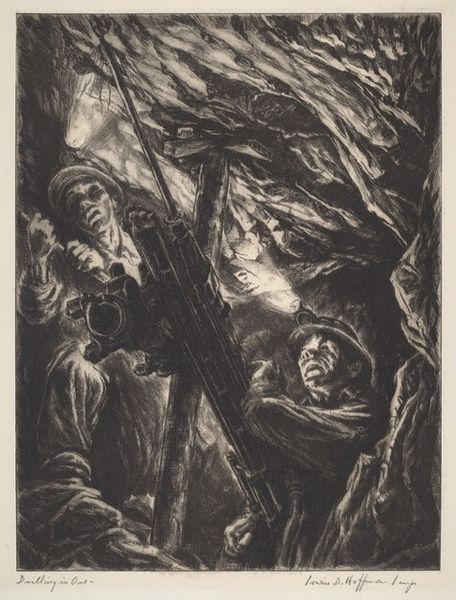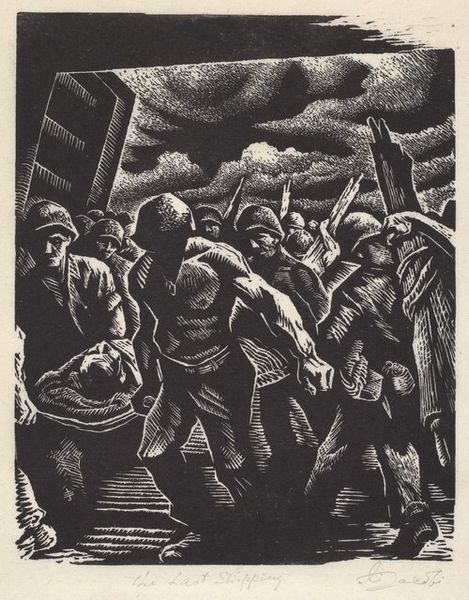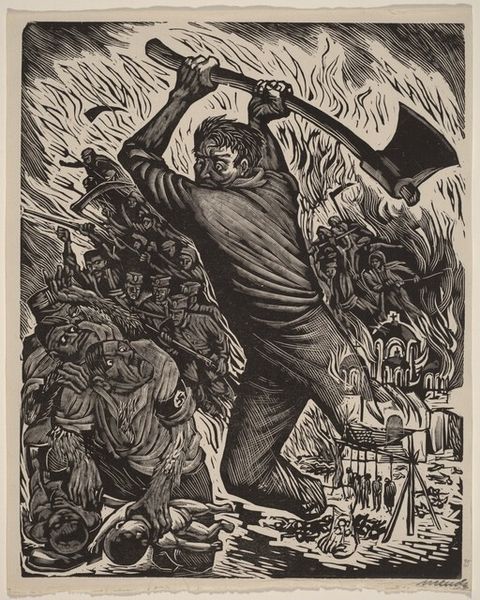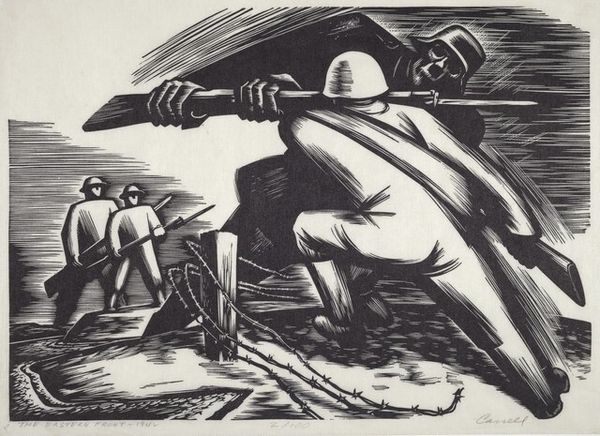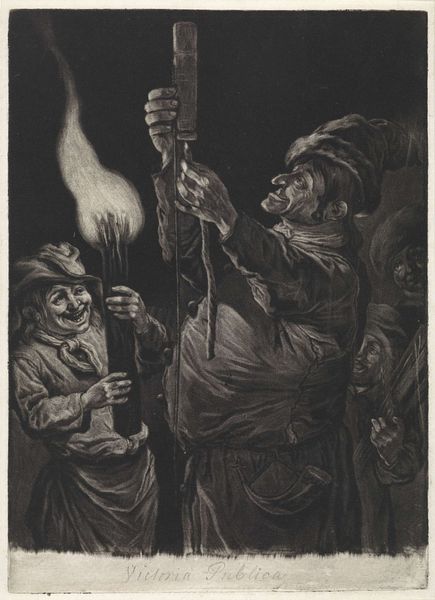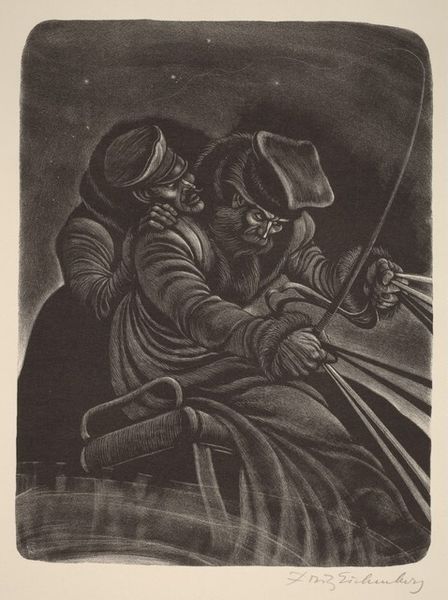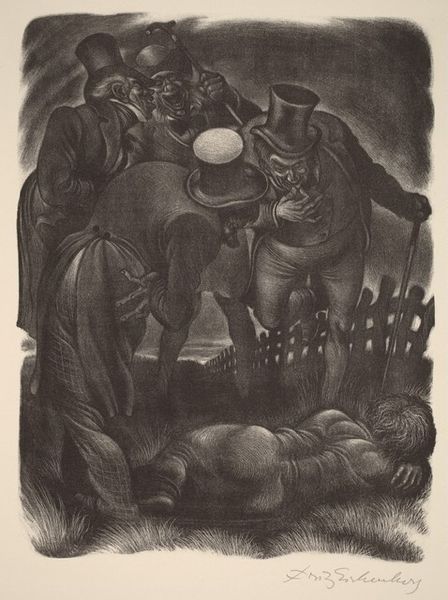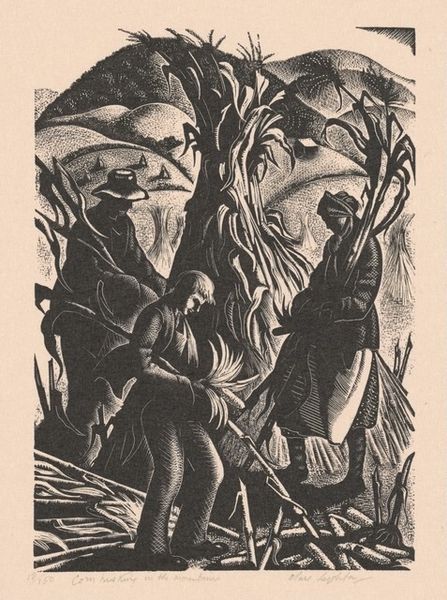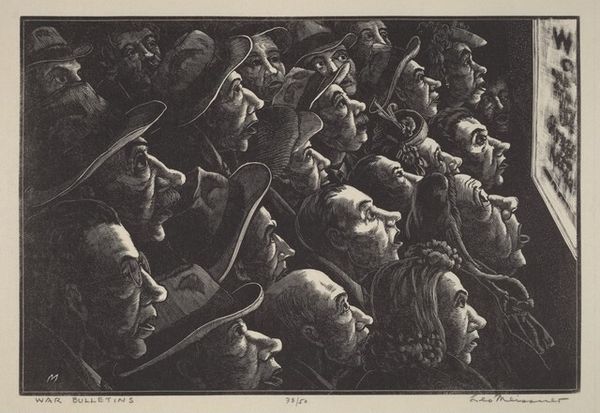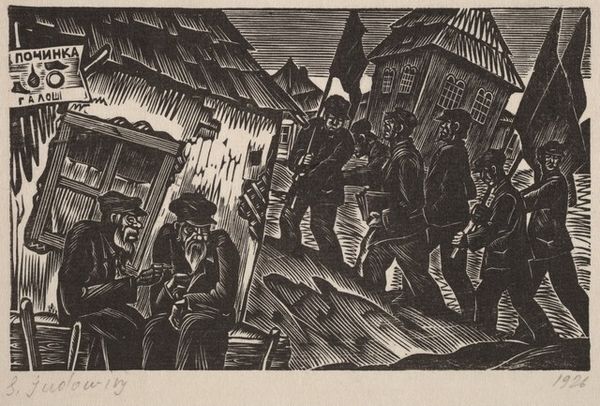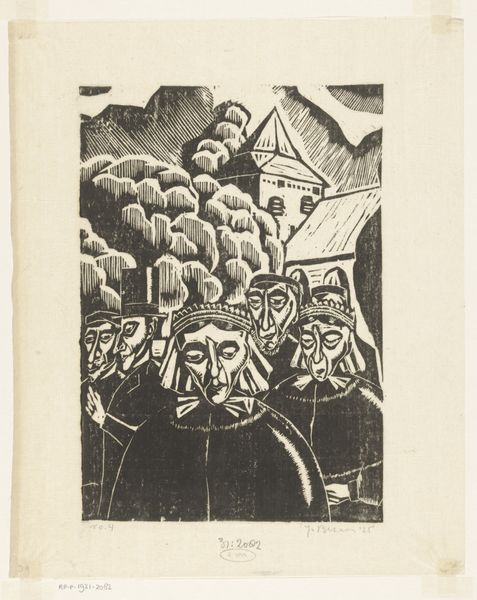
Dimensions: Image: 126 x 102 mm Sheet: 240 x 213 mm
Copyright: National Gallery of Art: CC0 1.0
Editor: "The Last Walk," a print made around 1943 by Hans Jelinek. It's stark, graphic... unsettling. There’s this overwhelming sense of impending doom. What can you tell me about this work? Curator: Given the historical context and the imagery, particularly the menacing figures brandishing weapons, it's reasonable to interpret this piece through the lens of wartime trauma. Jelinek created this during World War II. What might "the last walk" signify within that framework? Think about forced marches, displacement... Editor: It’s like…the walk *to* somewhere terrible? Curator: Exactly. The Expressionist style amplifies that horror; the exaggerated features, the harsh lines… they speak to a profound psychological disturbance. What kind of relationship do you think that the work has with institutional critique, if any? Consider how images like these function in shaping public perception of war. Editor: Is it critiquing the glorification of war, maybe? Or the dehumanization of people within conflict? Curator: Precisely. This print arguably undermines heroic narratives and confronts viewers with the raw, brutal reality of violence and oppression, which were promoted or ignored by many institutions at the time. Do you think museums can or should avoid such explicit work from being on view? Editor: I don’t think they should avoid showing the artwork, but present and explain the complex historical content. Ignoring such pieces means ignoring crucial aspects of our past and potentially enabling similar situations in the future. Thank you so much for that, it was really enlightening. Curator: My pleasure. Thinking about the artwork this way gives new appreciation to the role it could play when displayed publicly.
Comments
No comments
Be the first to comment and join the conversation on the ultimate creative platform.

